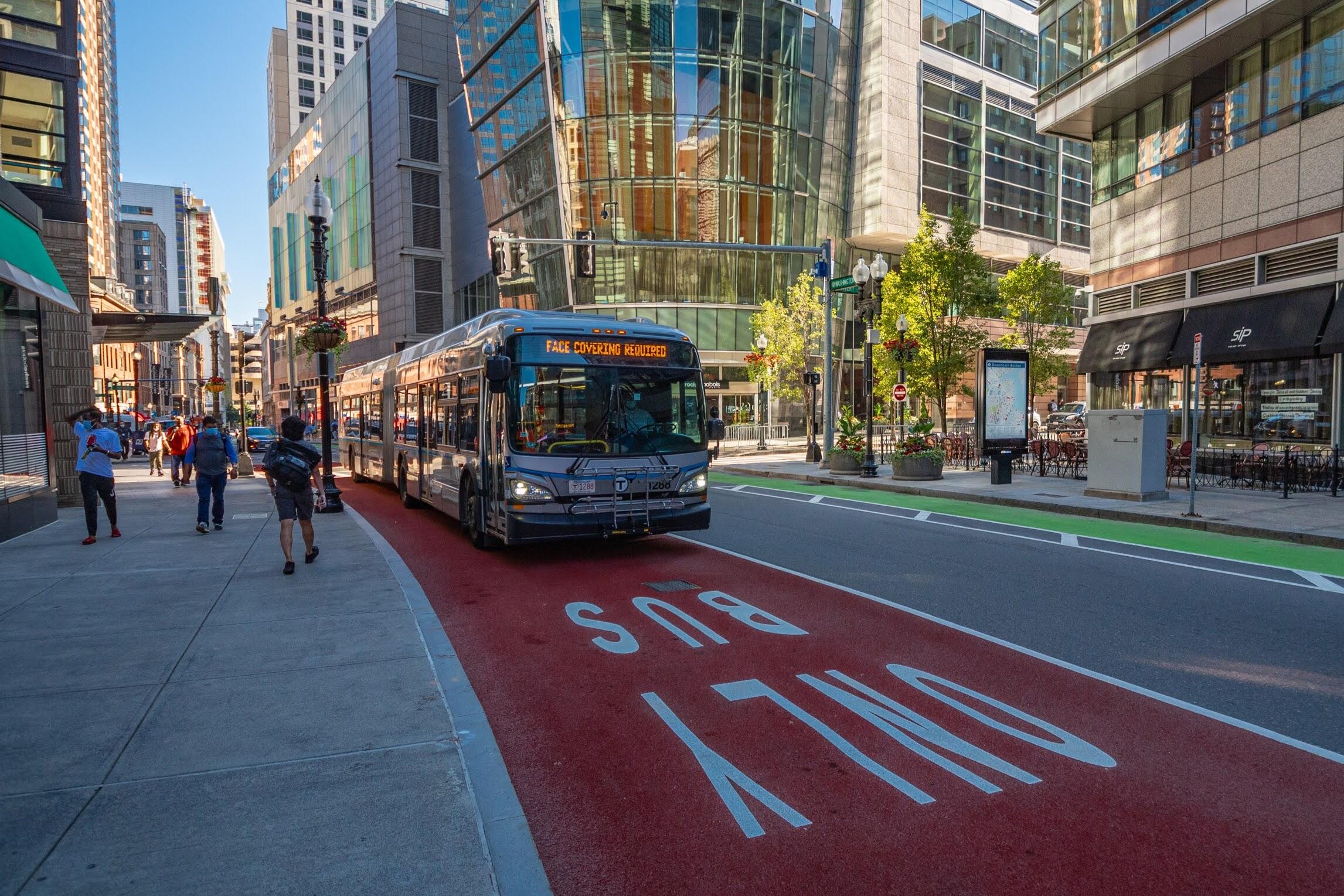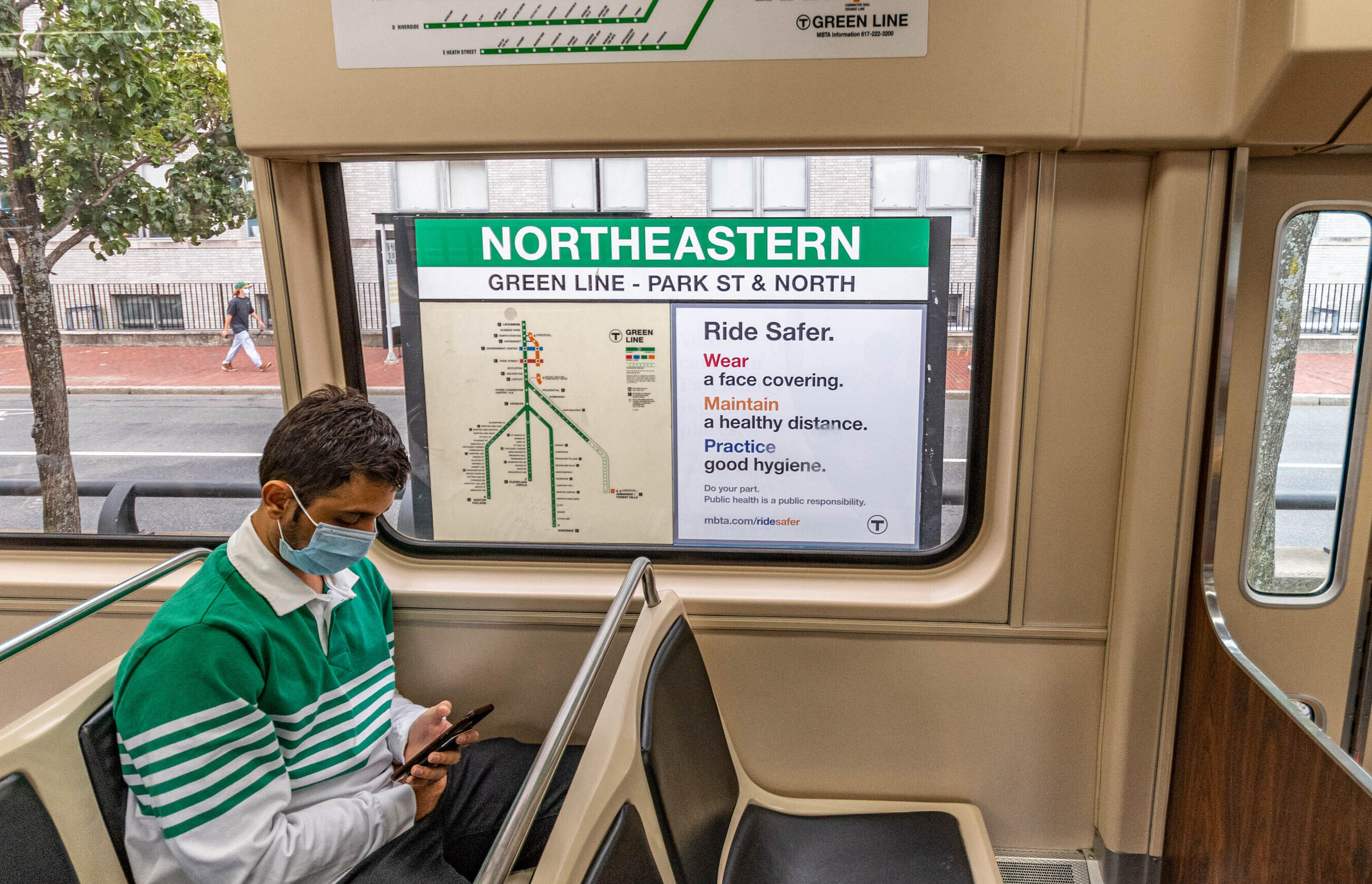Forging Ahead
Updated April 5, 2021

Due to an infusion of federal funding, as of April 2021, the MBTA is able to begin bringing service back to 100% pre-pandemic levels.
Learn more about our plan to bring back service
Last year, challenged by unprecedentedly low ridership due to the COVID-19 pandemic, the MBTA faced a historic moment: In 2019, MBTA riders took 1.26 million daily trips. In October 2020, riders took around 330,000 daily trips—or 26% of daily ridership compared to 2019.
While we continued to run close to 2019 service levels through this time, it did not match changing demand and travel behaviors caused by the pandemic. In order to protect essential service for those who depend upon it, we needed to reduce service where there were fewer riders.
The MBTA planned the Forging Ahead program to preserve access and quality of service available to these transit-critical customers.
In November 2020, we presented the first Forging Ahead proposal, before beginning a public engagement process that included ten public meetings and one public hearing.
Based on the feedback we received during this month-long process—including more than 7,000 comments from riders and MBTA stakeholders—we proposed an updated plan to the Fiscal and Management Control Board on December 14, 2020.
This proposal better matched service demand, and accounted for future expected ridership levels. It also allowed us to be flexible and increase service frequency in response to ridership and revenue.
The revised base service:
- Reduced service frequency
- Preserved more access to service and hours of operation
- Avoided some service changes that would have required customers switch modes
By focusing on reductions to service frequency during this time, the MBTA was better prepared to increase service when ridership returns and more revenue becomes available. Any savings from service reductions would be used to increase service frequency if needed.
These adjustments:
- Preserved the majority of pre-pandemic service (by as much as 90%, depending on mode)
- Aligned current service levels with changing ridership and demand
- Maintained service for those who depend on public transit
- Reduced primarily non-essential services (e.g. where we’re currently operating empty trains and buses)
Base service levels ensure capacity for all essential services, and reduce non-essential service to a level that is still viable for most people who currently use the T.
No changes in fares are being proposed at this time. Any potential fare increase in the future would need to be evaluated by a separate public process.
Commuter Rail and Ferry
Service changes began January 23, 2021, with more changes going into effect on April 5, 2021.
Subway and Bus
Service changes begin March 15, 2021, with more changes going into effect in June 2021.
The RIDE
Service changes may begin in March 2021.
See all Spring 2021 service changes
This timeline allows for further service adjustments if ridership changes in the near future, or if durable revenue becomes available.
The FMCB voted on these changes on December 14, 2020.
Most service changes are not intended to be permanent. We will bring back higher levels of service when demand and travel patterns change, and there is durable revenue to support it.
In some cases, particularly for non-essential bus routes and Commuter Rail, changes to pre-COVID service may be appropriate in order to reflect post-COVID changes in commuting and other travel patterns. We will restore service in response to ridership and in line with our planning to transform these services.
Through these difficult conversations, we are prioritizing the transit needs of people using the system today.
Essential service:
- Supports riders who continue to rely on the T for essential service, with particular attention to equity
- Serves communities where transit is critical, including communities with residents who are low-income, people of color, seniors, people with disabilities, or who live in households with few or no vehicles (high transit critical populations)
- Serves populations that have higher ridership potential, based on current and pre-COVID ridership (high transit propensity populations)
Our goal is to preserve essential service. In other words, essential services will be maintained at or above “minimum” service levels outlined in the MBTA Service Delivery Policy.
Thank You for Providing Feedback
Reducing service is a difficult topic. We appreciate your feedback on the proposed changes and how to prioritize adding back service.
The public input period ended at 5 PM on December 4, 2020. Thank you to all those who participated and offered feedback.
You can still provide feedback to the MBTA by contacting our Community Liaisons at publicengagement@mbta.com.
Learn More About Our Plan
View our presentation to the Fiscal and Management Control Board about how we plan to bring back service in 2021.
Environmental Review
The MBTA submitted an Environmental Notification Form for the Forging Ahead program to the Executive Office of Energy and Environment. The ENF is available for public review and comment.
Ride Safer

As Massachusetts enters the latest phase of the pandemic, we’re committed to keeping you safe on public transportation.
Learn More About Our Plan
View our presentation to the Fiscal and Management Control Board about how we plan to bring back service in 2021.
Environmental Review
The MBTA submitted an Environmental Notification Form for the Forging Ahead program to the Executive Office of Energy and Environment. The ENF is available for public review and comment.
Ride Safer

As Massachusetts enters the latest phase of the pandemic, we’re committed to keeping you safe on public transportation.